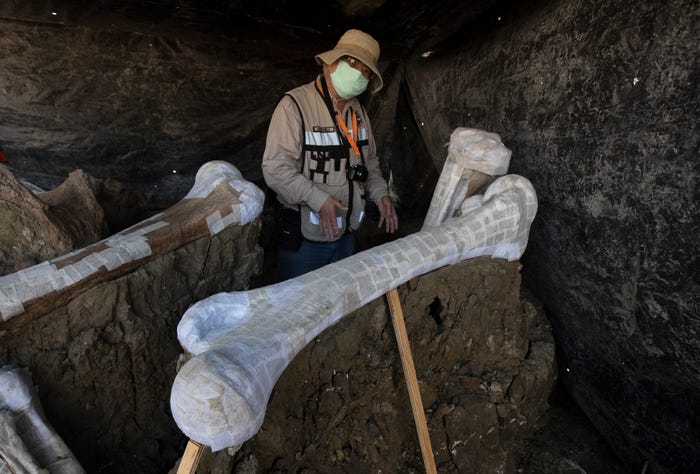 Ruben Manzanilla Lopez of the National Institute of Anthropology and History shows the skeleton of a mammoth discovered in the construction site of Mexico City’s new airport on September 3. Marco Ugarte/AP
Ruben Manzanilla Lopez of the National Institute of Anthropology and History shows the skeleton of a mammoth discovered in the construction site of Mexico City’s new airport on September 3. Marco Ugarte/AP
Two hundred ancient mammoth skeletons have been discovered beneath an airport construction site north of Mexico City — the largest collection of mammoth bones ever found.
Archaeologists at Mexico’s National Institute of Anthropology and History first realized the area might hide mammoth remains after they found two human-dug mammoth traps in November as part of routine excavations to clear land for the airport site.
The traps, in an area intended for use as a garbage dump in the town of Tultepec, contained the bones of at least 14 Columbian mammoths.
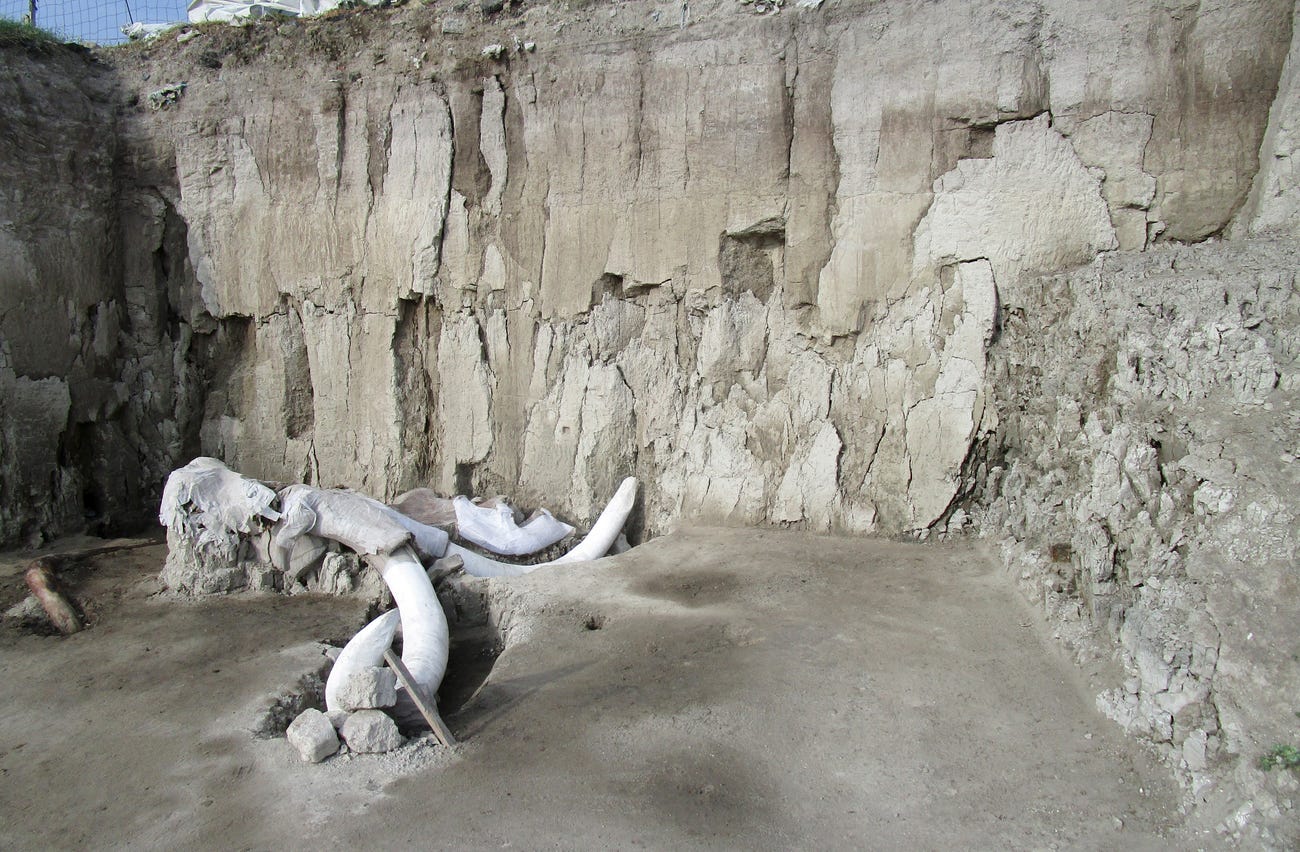 Mammoth bones at an excavation site in Tultepec, north of Mexico City. Meliton Tapia/Mexico’s National Institute of Anthropology and History via AP
Mammoth bones at an excavation site in Tultepec, north of Mexico City. Meliton Tapia/Mexico’s National Institute of Anthropology and History via AP
The construction site of the Felipe Ángeles International Airport is just 12 miles from those traps. There, excavation teams discovered in May that the dried-up bed of Lake Xaltocan held at least 60 mammoth skeletons. The total uncovered has since reached 200 — with more bones still waiting underground.
“There are too many. There are hundreds,” Pedro Sánchez Nava, an archaeologist at the institute, told The Associated Press.
Now an observer accompanies every bulldozer at the construction site, just in case one digs up new mammoth bones, according to The AP.
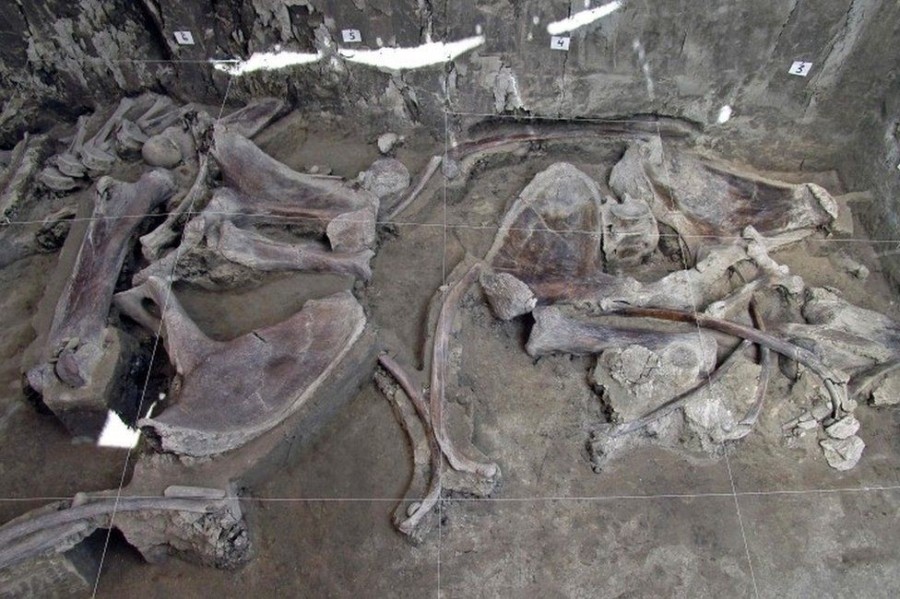
The previous largest mammoth site discovered, in Hot Springs, South Dakota, held the remains of about 60 mammoths.
The discovery could shed light on why mammoths went extinct
Columbian mammoths arrived in North America about 1 million years ago. They stood up to 14 feet tall and lived about as long as humans: 70 to 80 years.
Unlike their woolly counterparts in Europe, these mammoths likely didn’t have much hair — an adaptation to North America’s warmer climate. Their range extended from Canada to Nicaragua and Honduras.
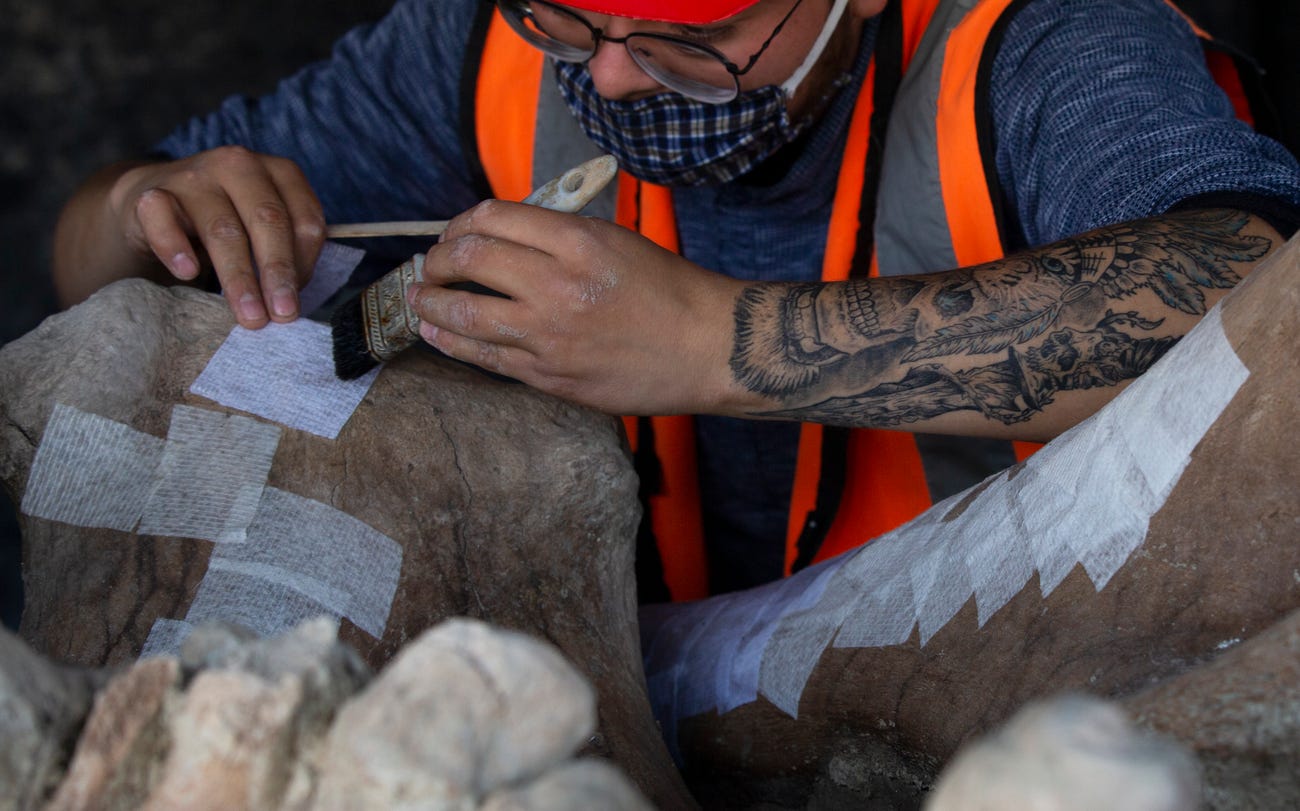 A paleontologist works to preserve the skeleton of a mammoth on September 3. Marco Ugarte/AP
A paleontologist works to preserve the skeleton of a mammoth on September 3. Marco Ugarte/AP
Columbian mammoths went extinct between 13,000 and 10,000 years ago, and many paleontologists think prehistoric human hunters played a major role.
That’s one of the aspects of this site that researchers hope to investigate. Humans clearly killed the mammoths in the pits discovered in Tultepec, but it’s not yet clear whether they played a role in driving the 200-plus mammoths into the lake bed.
Researchers think the mammoths might have gotten stuck in mud along the lake’s shore, then died of starvation or drowning. That could have happened naturally, since the lake’s grasses and reeds would have attracted the mammoths to feed. But the huge number of skeletons could also indicate that humans cleverly used the lakeshore’s stickiness to their advantage, according to Sánchez Nava.
“It’s possible they may have chased them into the mud,” he told The AP in May.
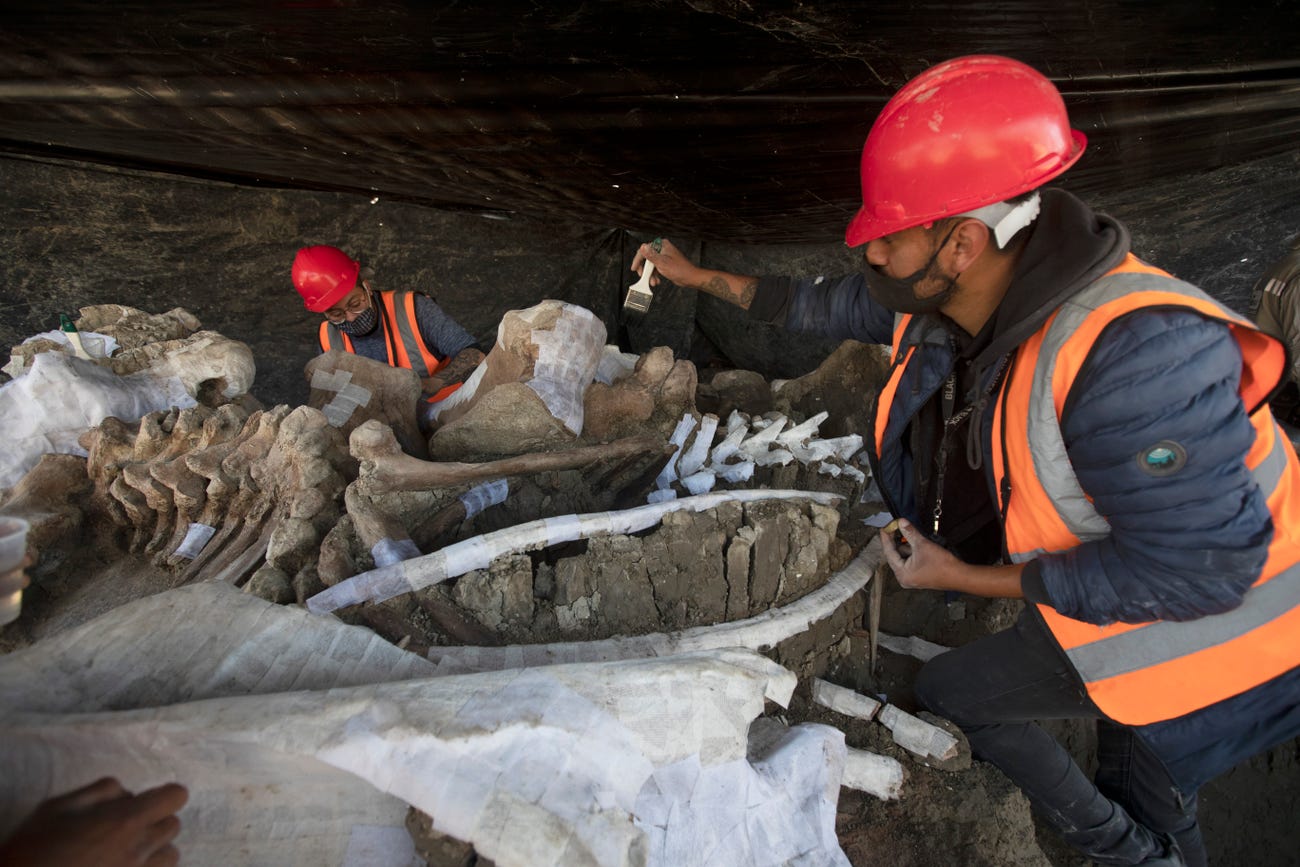 The site on September 3. Marco Ugarte/AP
The site on September 3. Marco Ugarte/AP
If that’s true, it would mean humans were capable of killing larger numbers of mammoths than previously thought. It could also be evidence that ancient people ate mammoth meat as a staple part of their diets — not sporadically, as researchers had assumed before.
However, the bones found at the airport site haven’t yet shown any marks that would indicate humans butchered the animals.
If humans were involved in the creatures’ deaths, however, that would add support to the idea that people contributed to or caused Columbian mammoths’ extinction in the Americas. The other prevailing theory suggests the beasts perished because of habitat loss caused by warming weather as the ice age ended.
Or it could be a combination of both factors, according to paleontologist Joaquin Arroyo-Cabrales, who works at the anthropology institute.
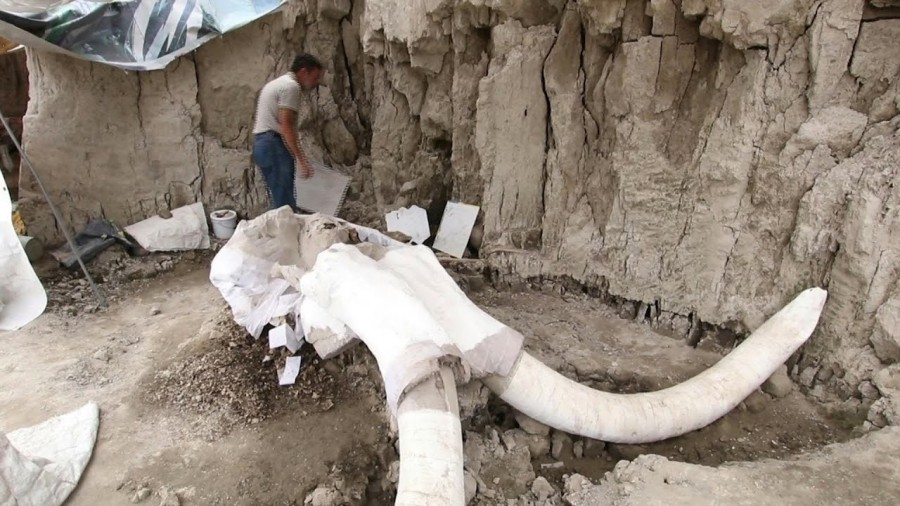
“I think in the end the decision will be that there was a synergy effect between climate change and human presence,” he told The AP.
Humans may have made tools out of mammoth bones
Even if humans didn’t kill the mammoths in the lake bed directly, evidence is emerging that ancient civilizations around the area used the animals’ bones for tools. Archaeologists have so far discovered dozens of tools around the site that were at least partially made from mammoth bones, like knives with mammoth-bone shafts.
But they’re not sure the bones in the tools came from the mammoths found in the lake bed. They could have come from other mammoths, like the ones in the nearby Tultepec pits.
Further laboratory tests could help paleontologists determine what relationship, if any, humans had with the mammoth bones in the lake bed — whether they killed them, ate them, used them for tools, or all three.